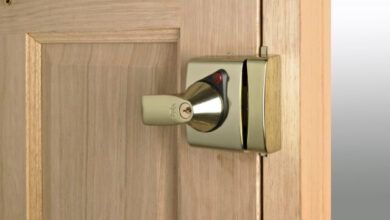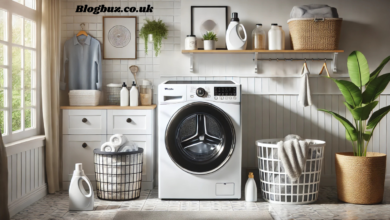Cabinet Hardware Choices That Transform Your Space

You’ve picked your paint. You’ve selected your slab—maybe granite countertops for a bold, natural look or quartz countertops for something clean and low-maintenance. You’ve even finalized your cabinet installation layout. But then comes the seemingly minor decision that can make or break the whole design: cabinet hardware.
Handles, pulls, and knobs may be small, but they’re high-impact. They guide the eye, set the tone, and directly affect how you interact with your space every day. Whether you’re updating an existing kitchen or bathroom or building from scratch, the right hardware adds texture, polish, and personality.
Below are expert tips for selecting hardware that works with your space—not against it.
1. Understand the Style Story You’re Telling
Your cabinetry and countertop choices already say a lot about your design preferences. The hardware you choose should echo or balance that tone.
- Modern cabinets with flat panels or slab fronts? Go for sleek, linear pulls in matte black, brushed nickel, or brass.
- Traditional cabinetry with raised panels? Classic round knobs or ornate pulls in oil-rubbed bronze or antique finishes will fit naturally.
- Rustic or farmhouse styles pair beautifully with hammered textures, cup pulls, and iron finishes.
Your hardware shouldn’t fight your surfaces. If your quartz countertops are ultra-minimal, don’t overwhelm them with chunky or overly decorative handles.
2. Think in Terms of Finish Pairings
Hardware is a connector between materials. It bridges the cabinetry and the countertops visually, so it’s smart to choose a finish that works with both.
Here’s how different finishes complement common surfaces:
- Brushed nickel: A universal match for most granite countertops and light or mid-tone cabinets. Subtle and clean.
- Matte black: Works well with white cabinets and quartz for contrast, or pairs with dark wood for a monochrome look.
- Polished chrome: Reflective and modern—great with glossy cabinets and clean-cut quartz surfaces.
- Antique brass: Adds warmth to white cabinetry and complements earthy granite tones.
If you’ve got two-tone cabinetry or mixed materials, consider repeating the hardware finish elsewhere—like in your faucet, pendant lighting, or shelving brackets—to unify the look.
3. Match Scale to Space
Oversized hardware on tiny drawers? Tiny knobs on big pantry doors? Both can throw off the balance of your design.
The general guideline:
- Knobs are ideal for small drawers and doors.
- Pulls work best on larger drawers and vertical cabinet doors.
- Extra-long pulls (8–12 inches) create a streamlined, upscale look on wide drawers or integrated appliances.
When working with full-height cabinet installation, especially in pantries or utility spaces, hardware should be ergonomic and scaled to the cabinet’s visual weight. Think long bar pulls or recessed finger grooves for tall doors.
4. Mix—But Don’t Mismatch
Yes, mixing metals is on trend. No, it doesn’t mean anything goes. A good rule of thumb: stick to two finishes max. Use one dominant finish for your cabinet hardware, and a secondary finish for accents like lighting or plumbing.
Here’s one way to do it:
- Primary finish: Matte black hardware on cabinets
- Accent finish: Brushed brass on light fixtures and open shelving brackets
This approach allows for visual interest without clutter or inconsistency.
5. Don’t Overlook Comfort
Style matters, but so does touch. You’ll be interacting with this hardware daily—make sure it feels right.
Try before you buy:
- Is the hardware easy to grip?
- Does it have sharp edges or a finish that smudges easily?
- Does it work well with the cabinet overlay or in tight spaces?
This is especially important in bathrooms, where wet hands, smaller drawers, and limited space can make function more critical than flair.
6. Consider a No-Hardware Look (With a Twist)
In minimalist kitchens or compact spaces, the absence of visible hardware can make cabinetry feel more integrated and open.
Options include:
- Push-to-open mechanisms: Great for slab-front cabinets, though not ideal for high-traffic kitchens.
- Edge pulls: A barely-there solution that adds subtle functionality.
- Cut-out pulls: Built into the cabinet front, blending seamlessly.
This look pairs beautifully with quartz countertops, especially in white or soft gray tones where smooth transitions are part of the appeal.
7. Think About the Whole Picture
Hardware is part of the larger ecosystem of your home’s design. It should connect visually with:
- Countertop materials: A high-variation granite countertop may call for simpler, more grounded hardware to avoid visual competition.
- Backsplash and tile: Avoid duplicating patterns or finishes that are already busy.
- Flooring: Dark wood floors? Consider warmer or darker hardware tones. Lighter floors? Brushed or polished finishes often pair best.
Every finish, material, and silhouette should feel intentional—even if it’s bold or unconventional.
8. Match Quality to Investment
You’ve invested in premium surfaces and professional cabinet installation. Don’t undercut that with flimsy, low-cost hardware. Look for pieces that:
- Feel substantial in hand
- Are rated for frequent use
- Have a finish that won’t tarnish, chip, or corrode
Some of the best kitchens and baths are defined by their consistency—not by any single bold choice. Make sure your hardware belongs in the same quality tier as the rest of your build.
Final Takeaway: Small Detail, Big Payoff
In the world of interiors, hardware may be one of the most undervalued tools in the design toolbox. But it shouldn’t be an afterthought.
With the right combination of materials—durable granite countertops, smooth quartz countertops, and custom cabinet installation—you’re already working with a solid foundation. Cabinet hardware is what personalizes the space. It adds polish. It connects function with style.
Brands like BNJ Granite & Cabinets understand how even the smallest choices contribute to the success of a space. It’s not just about what you see—it’s about how it all works together.
So choose wisely. Let your hardware tell the final chapter of your design story—and make it one worth reaching for every day.




